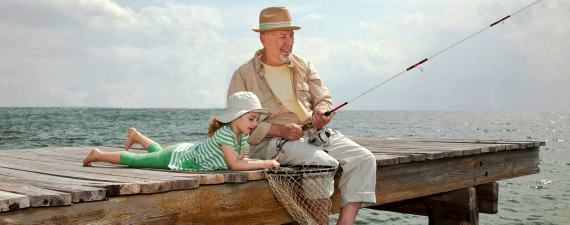Remember retirement is an adventure, not a destination. That was the mantra I learned riding motorcycles years ago. We spend a lifetime working and investing to reach our retirement goals. Once we are retired, our investment strategy doesn’t stop. You may need to refocus but it’s not the endgame. You are now in a phase of life that could easily span 30 years and if you are married even more certain to be for at least one of you. Inflation during this 30 year period is the number one concern each retiree will face.
The fear or consequences of inflation should influence a very important decision regarding your asset allocation. Unfortunately too many retirees think they should shift assets to bonds for income and stability. A properly diversified portfolio should include stocks otherwise you risk too low of return that won’t even keep up with the inflation rate.
Rather than drawing only income (maybe in the form of interest & dividends) from your portfolio to support your retirement spending, a total return approach (using both income and capital appreciation) gives you a better chance of meeting your goals. Research shows that if you have a balanced portfolio (normally representing around 50% bonds/50% stocks) you can expect to draw 3-4%from your portfolio balance each year and still maintain your spending power over your lifetime. In other words never run out of money. I think this is kind of important if you ask me. Do you still want to know what your portfolio return is? Just kidding I had to throw that in because too many people focus on the wrong thing. Returns are important but not as important as not running out of money. Maintaining an adequate cash reserve for short term needs can alleviate any concern over potential market fluctuations. Just don’t throw the baby out with the bath water. No stock position could jeopardize your lifestyle down the road.
It’s also important to consider which accounts to spend first, and how those accounts are invested. Investing tax efficiently, both before retirement and after retirement, can allow you to keep more of your earnings. Usually investors will benefit from a spending strategy that preserves tax-advantaged accounts longer. You may spend from your taxable dollars first, given the tax liability may be less, then from your tax deferred accounts, and lastly from your tax free accounts (ROTH IRA) assets. However, keep in mind if you are taking RMD’s then depending on your tax bracket now and in the future you may benefit from starting distributions from your tax-deferred account earlier. I would be glad to discuss with you strategies and the appropriate methods you should use for your situation. This can even change from year to year. Even in the golden years you want to invest balanced, well-diversified, tax efficient, and low cast. Thirty years of retirement can be a long time if you don’t plan properly.

